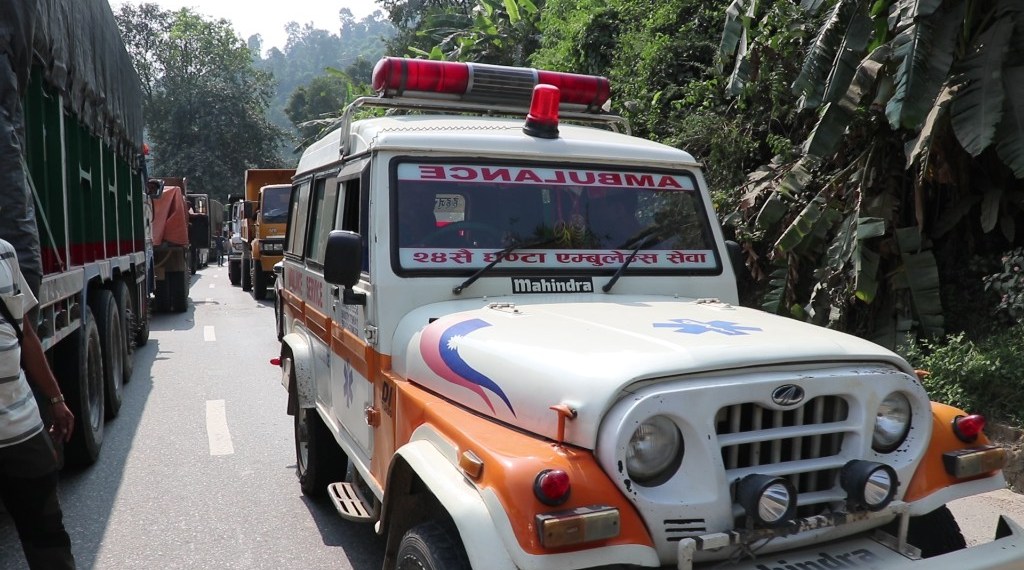Ambulance drivers at risk of contracting COVID-19
Kathmandu, April 7
Last week, when a 65-year-old woman from Baglung tested positive for COVID-19, she could not be immediately transported to Dhaulagiri Zonal Hospital, as the driver of the ambulance that was supposed to pick her had fled.
She was brought to the hospital only after another driver agreed to do so. “The first driver may have fled because of fear of contracting the disease,” said Sailendra BK Pokhrel, medical superintendent at Dhaulagiri Zonal Hospital.
Drivers are increasingly becoming wary of ferrying COVID-19 patients or people with symptoms akin to the disease, as they have not been given personal protective equipment.
“Due to lack of PPE, we have limited our services to Kathmandu and do not travel outside, as there is high risk of contracting the disease,” said Sanjay Tamang, an ambulance driver. “What is even more worrying is that patients and their relatives do not reveal the symptoms.
This exposes us to unknown risks as we have to come in close contact with them.”
Tamang has been given an N95 mask. “But we need safety gowns, goggles and gloves as well,” he said. “An insurance cover is also needed,” he added.
Around 11 per cent of patients that ambulances carry these days are suspected of having contracted coronavirus disease, according to Amit Joshi, chief operating officer at Nepal Ambulance Service.
“We ask for patients’ travel history and symptoms before ferrying them. If their symptoms are similar to that of COVID-19, we deploy a paramedic as well,” Joshi said.
Paramedics deployed to assist people suspected of contracting COVID-19 are given PPE, according to Joshi. “But drivers are not given protective gear because they do not have to come into close contact with the patient.
However, we are providing gowns, caps and masks to our drivers as well,” said Joshi.
But this does not solve the problem faced by ambulance drivers as their vehicles do not have double cabins. Double cabin creates a partition and prevents the driver from coming into contact with the patient. “Without a partition, chances of drivers getting infected cannot be ruled out. Infected drivers can then transmit the disease to other hospital staff or their family members,” said Shravan Kumar Mishra, senior virologist at National Public Health Laboratory.
Kedar Tamang, another ambulance driver, said, “Lately, there has been shortage of masks as well. At times we are asked to carry patients to the ambulance because their kin do not even want to touch them. We are, therefore, taking a big risk,” he said.
The exact number of ambulance drivers in Nepal is not known, but it runs into hundreds as according to the Ministry of Health and Population there are 2,397 ambulances in the country, excluding those donated by the Indian Embassy.
“Ambulances that transport COVID-19 patients should have a critical or intensive care bed as well and should be equipped with an oxygen cylinder. But our ambulances do not have those facilities,” said Mishra.






